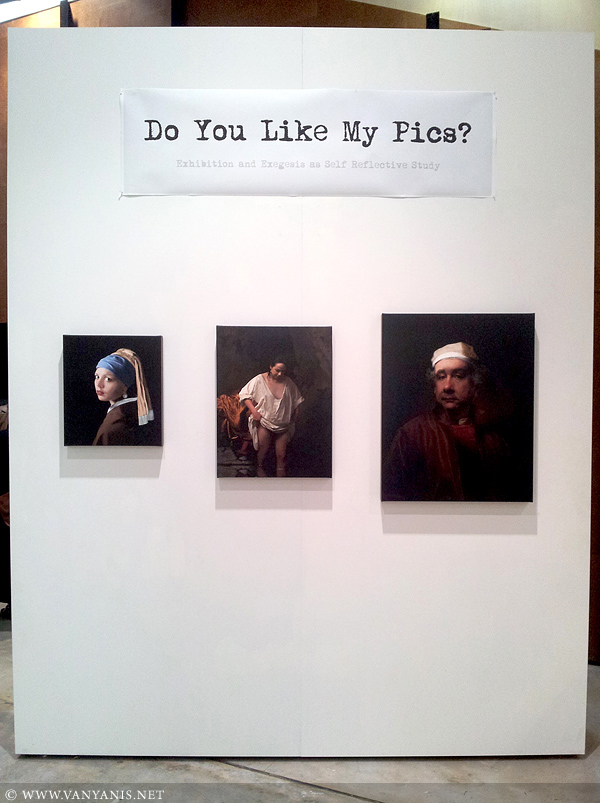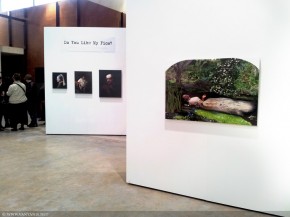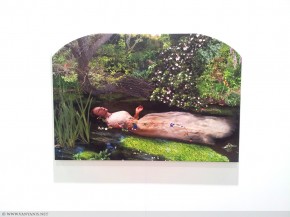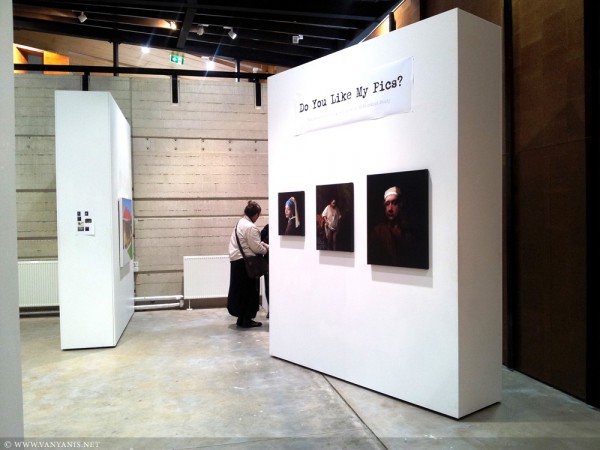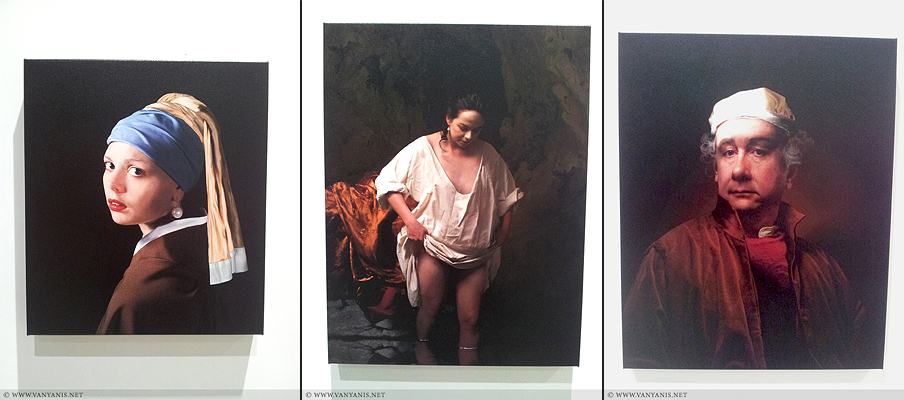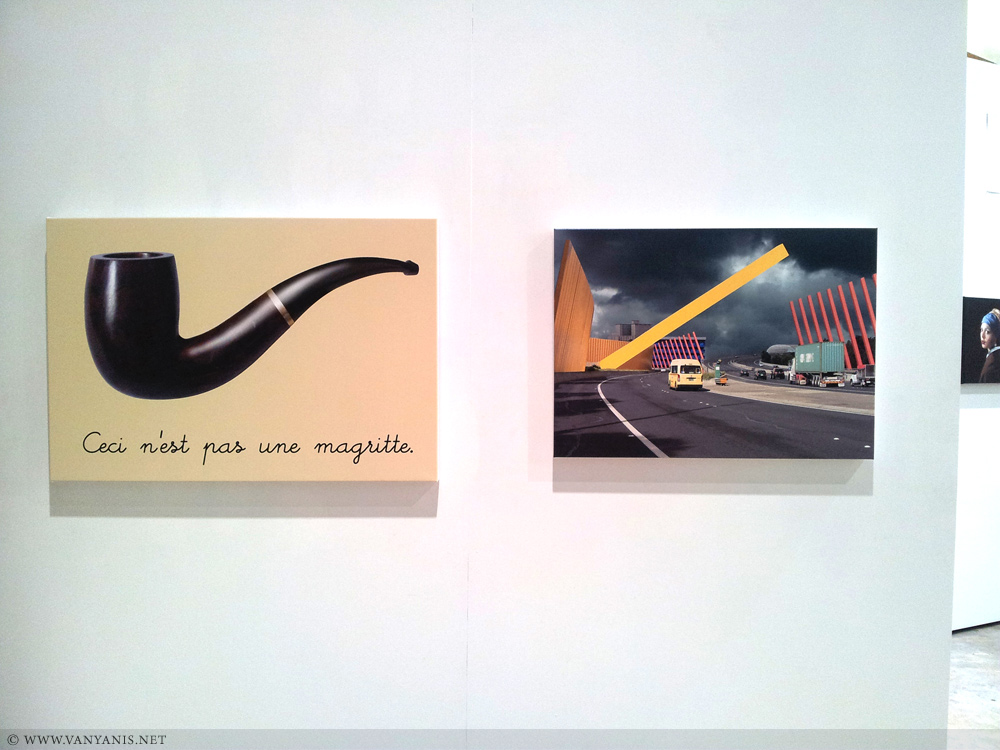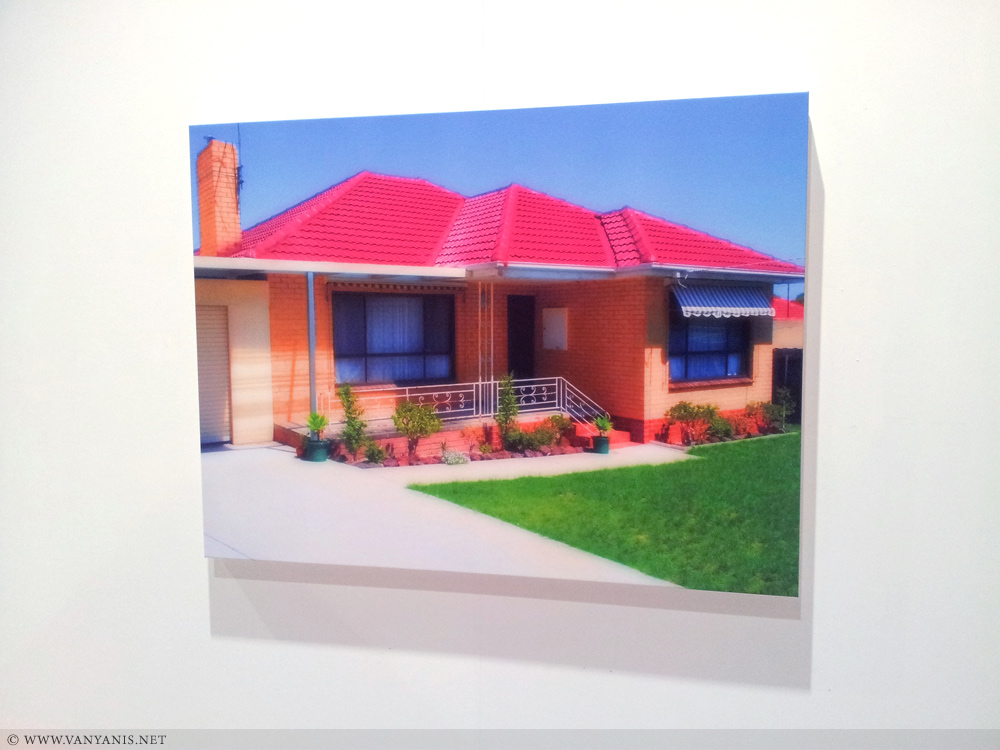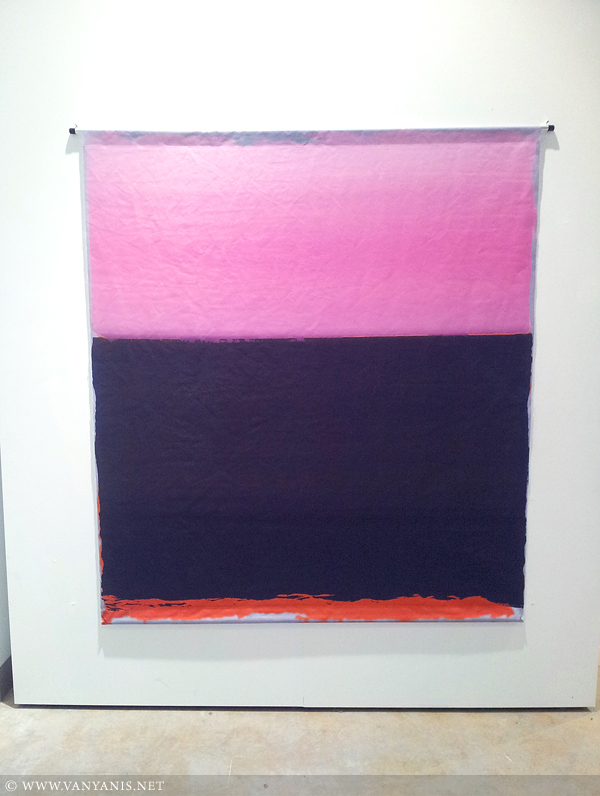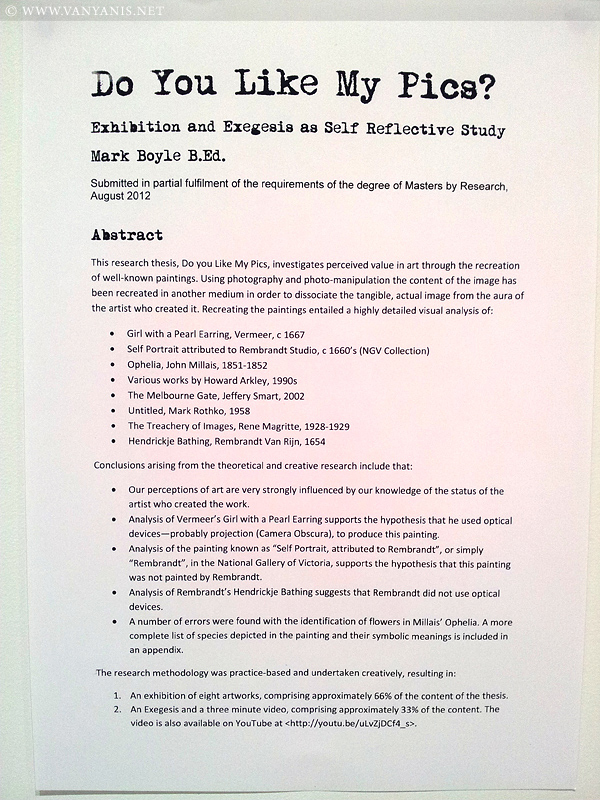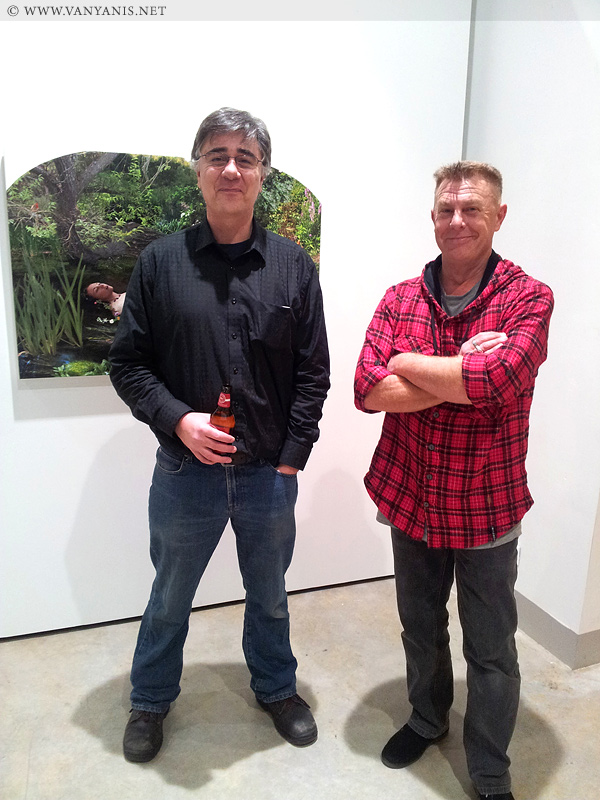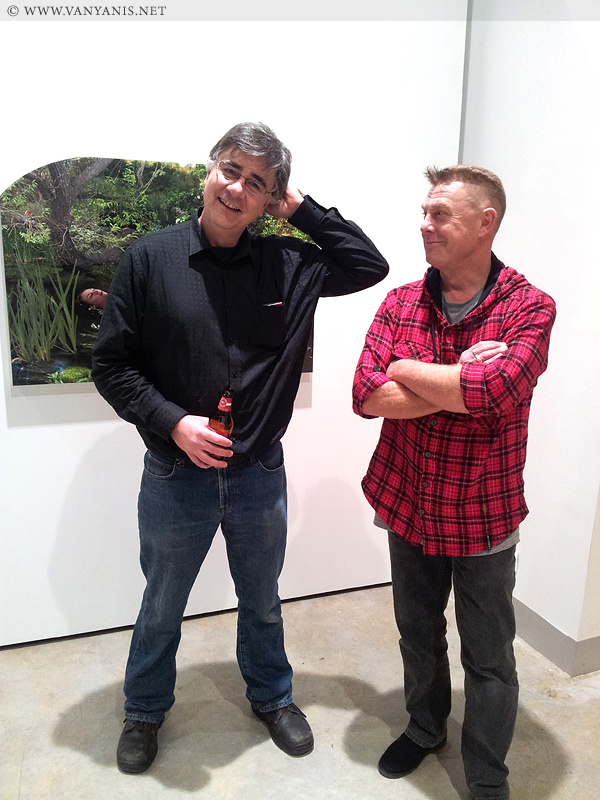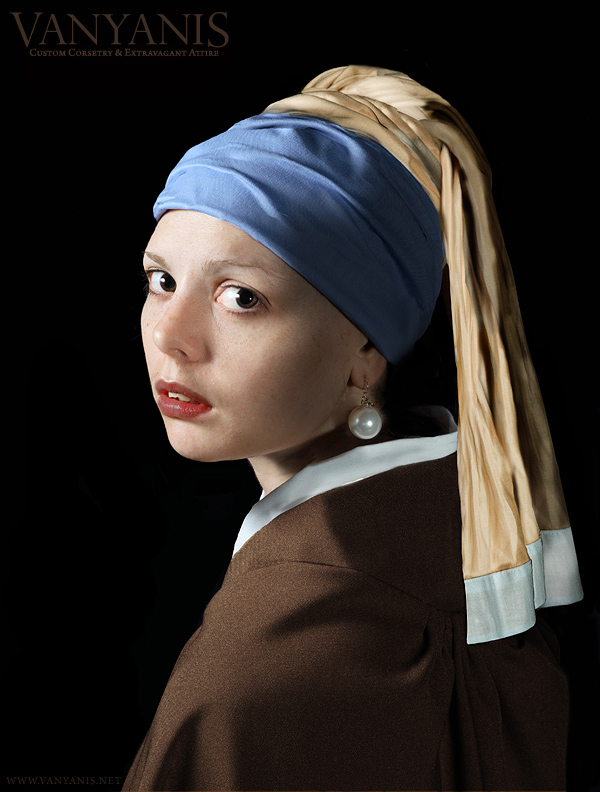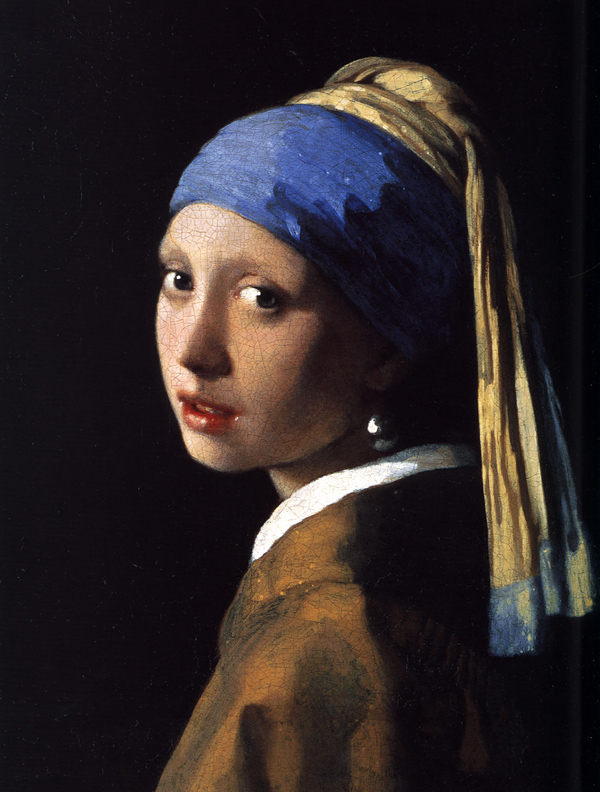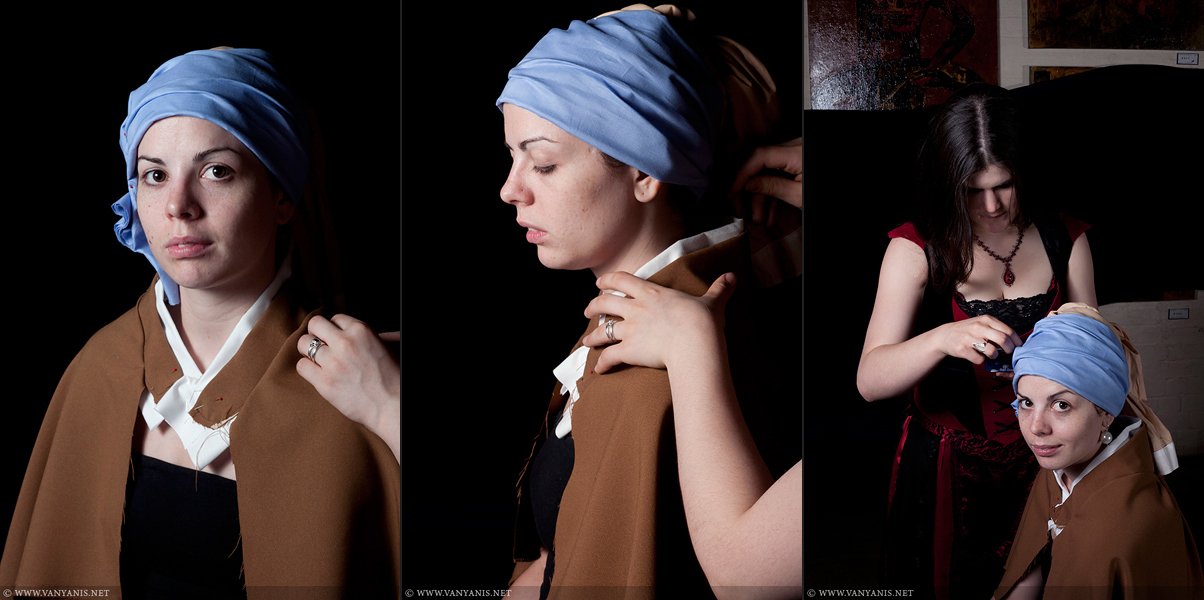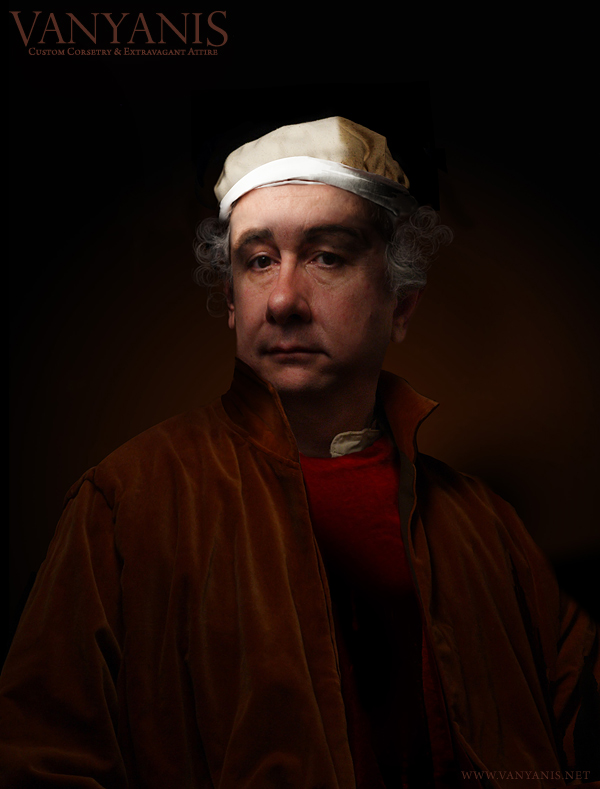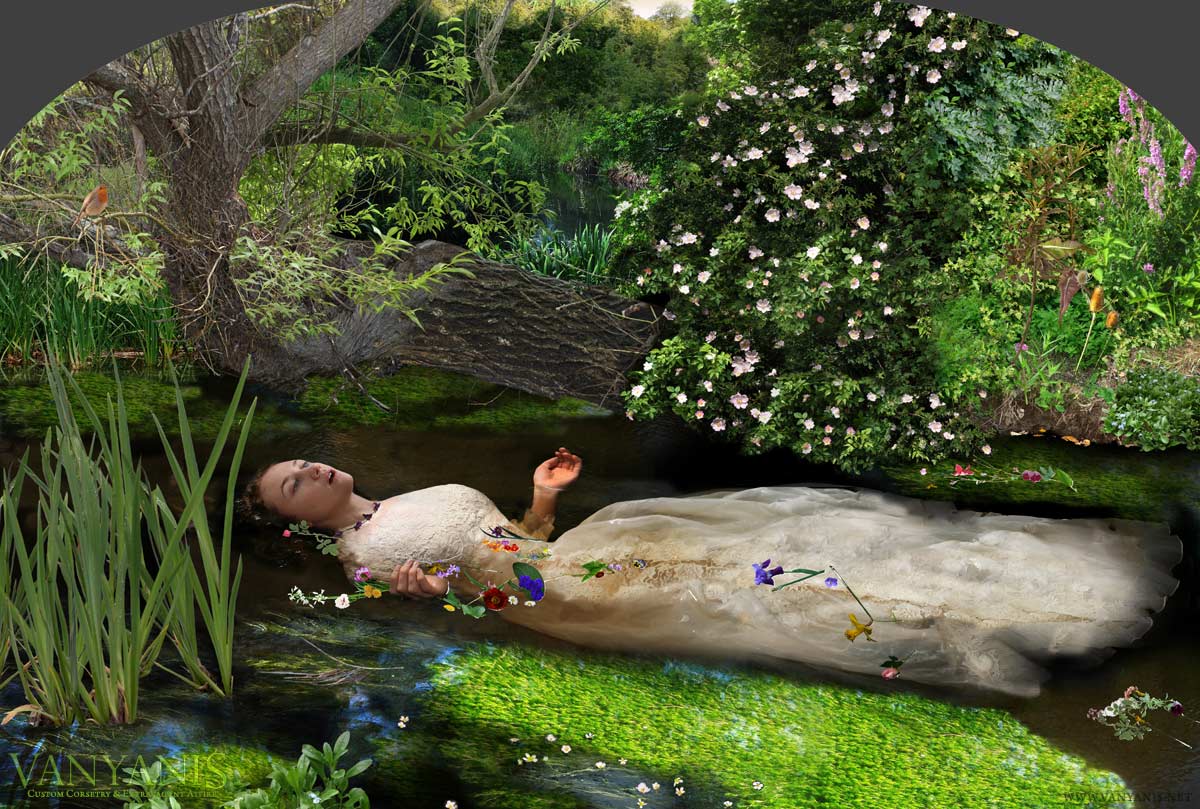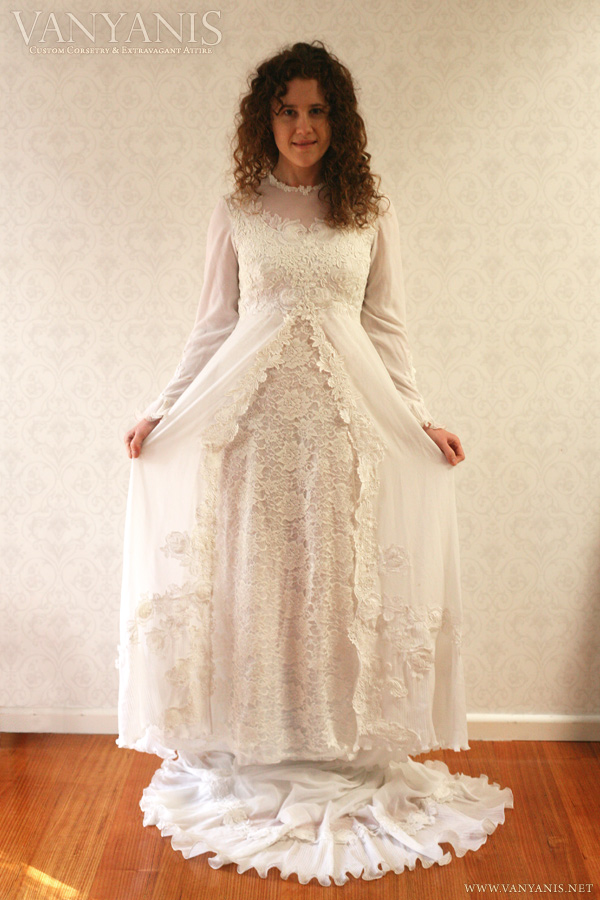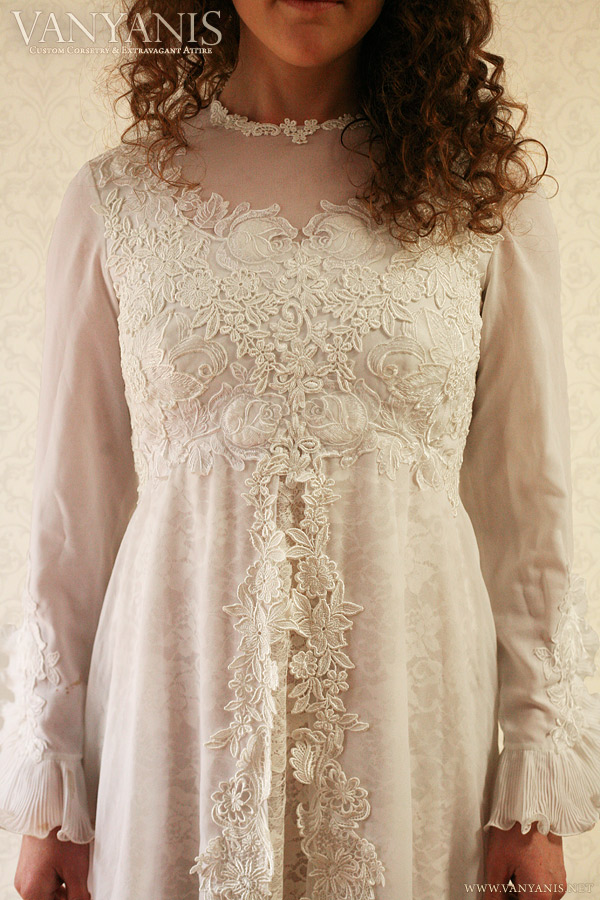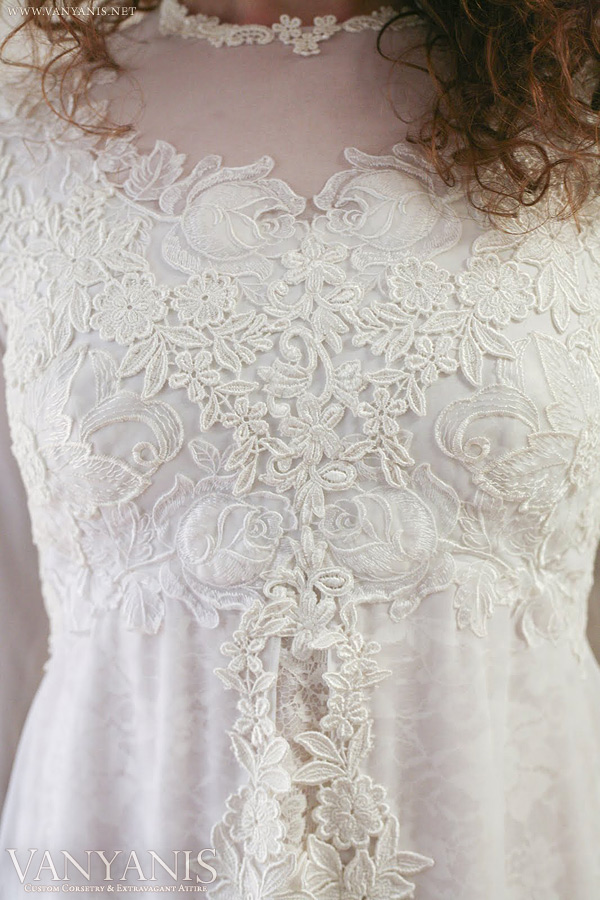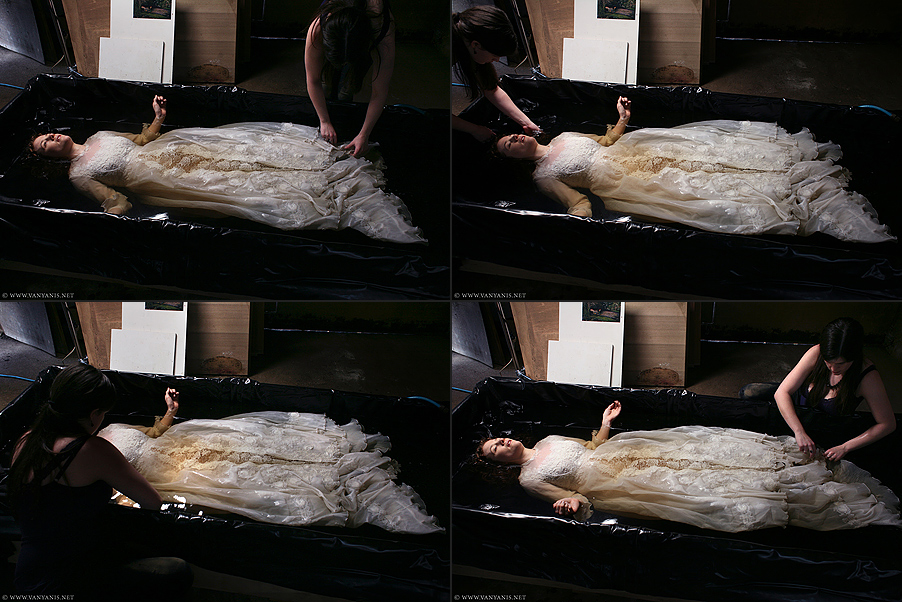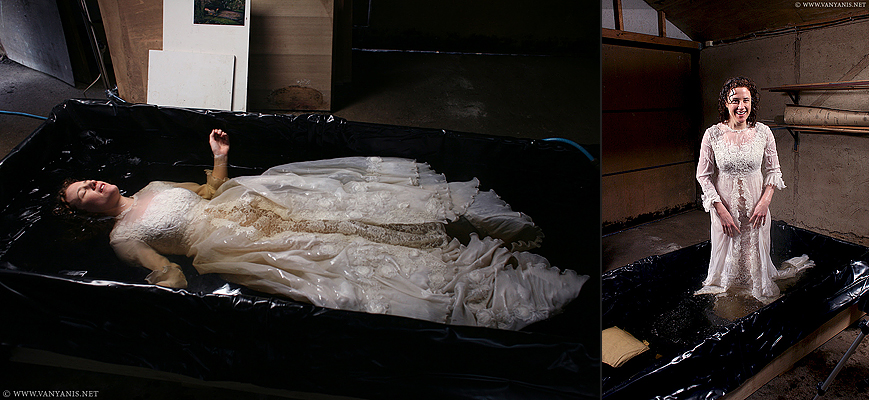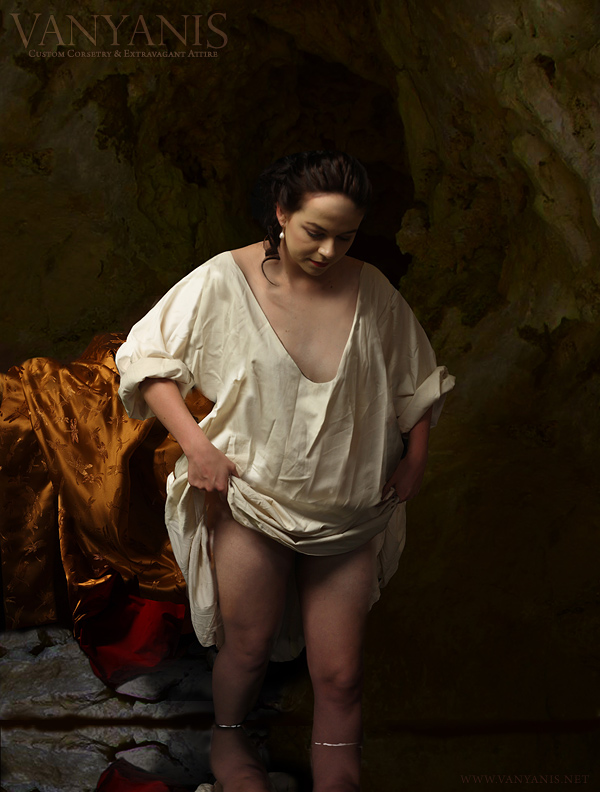Last year in August I attended my dear friend Mark’s photography exhibition that he showcased as part of the final stage of his Masters of Research degree. I’ve been sitting on this post for a while as I felt it deserved my full attention, as four years work cannot be just summed up in a few minutes! I first met Mark back in 2008 when I was working at a fabric shop (Textile Off Cuts, now co-owned by another dear friends mother). He came into the shop with a printed copy of the painting ‘Girl with a Pearl Earring’ by Vermeer and needed some help selecting fabrics to recreate the clothing pictured in the painting as well as advice on who to contact to get it made. As it so happens I was able to help him with both tasks and thus, a friendship was born.
The exhibition was held at the Wantirna Swinburne Campus and the opening was attended by some of Mark’s dearest friends and relatives (I was honoured to have been invited). Over the weeks it was on display it had quite a healthy turnout of viewers and Mark has been approached to have the exhibit elsewhere! I wasn’t able to get to the opening until the tail end of the event due to a fitting with a client, and most of the other guests had left. I snapped a few photos with my phone (ironically they are not very good photos) to try and capture the exhibition as best as I could.
All of the photos had been printed onto stretched canvas. Even though I had previously seen most of the artwork digitally prior to the exhibition, seeing them printed took my breath away. ‘Ophelia’ in particular was incredible as it was so much larger than I was ever able to view it on screen and I noticed so many details I hadn’t seen before. Mark had gotten the photographs printed at the same size as the original artworks.
To better explain the artwork and exhibition, below is a small excerpt from Mark’s thesis:
“When I started this project of reproducing painted artworks as photographs my purpose was to disengage the actual, tangible image from…the seemingly magical reputation, of the artist who had created it. I wanted to investigate why a painting by Van Gogh (such as Head of a Man, 1886) was worth $20 million, when the same painting, later having been revealed to be by an unknown painter…was worth $5000. The way into this topic seemed to be through the investigation of fakes and forgeries, and I thought that I would recreate the works of famous artists as photographs for a number of reasons.
First, although I had trained as a painter and draughtsperson early on, photography is now my medium. The introduction of digital photography and the abilities of software like Photoshop meant that I was able to produce high quality colour photographs…without time spent alone in complete darkness. Photoshop reignited my passion for photography. Photographs are now much more malleable and so the split between painting and photography has healed.
Second, it seemed that using a different medium would cast into high relief the actual tangible qualities of the image as a separate thing from any qualities of “genius” the painter might bring to the making of the object that is the painting. Rather than simply repaint a reproduction or forgery of a great painting, and enter into arguments about my skills (or lack of) as opposed to the skills of the great ones, I could use photography to distance the content of the image from the hand of the painter.
Third, on a personal level, it seemed like a project whose time had come. For a long time artist photographers had been playing with this notion. No-one, as far as I knew, had taken that further step of fitting the resulting photograph over the armature of the painting to make all the parts reproduce the scale and proportions of the original.” -Mark Boyle
Below are my (phone) photos of Mark’s artwork printed on canvas (higher quality photos viewable further in this post):
(Left to right) Girl with a Pearl Earring by Vermeer, Hendrickje Bathing by Rembrandt Van Rijn and Self Portrait attributed to Rembrandt Studio
L: The Treachery of Images by Rene Magritte and The Melbourne Gate by Jeffery Smart
R: Various works by Howard Arkley
L: Untitled, Mark Rothko
R: Exhibition Information
L: Mark (left) and his friend Max.
R: Looking slightly embarrassed & rather pleased.
Girl with a Pearl Earring, Vermeer c 1667
“I wanted the viewer to experience a disjunction, to have a double-take, as they viewed the artwork. I hoped the audience would recognise the painting and then realise it was in fact a photograph – ‘That’s Vermeer’s painting, Girl with a Pearl Earring, or whatever it’s called. No, wait, hang on, is that a photograph?’ ” –Mark Boyle
L: Girl with a Pearl Earring, Mark Boyle c 2008 | R: Girl with a Pearl Earring, Vermeer c 1667
This was the photo that started our friendship and creative collaborations. When Mark approached me in the fabric shop for help, instead of payment we negotiated that Mark would photograph my (then small) collection of outfits, at some point in the future. (Edit: If you’re on tumblr and love this set you can reblog it here.)
Behind the scenes
For this costume, I only made as much of it as you would see in the photo, and I also helped Mark as a wardrobe assistant at the shoot. Mark found Jessica (Mad Dame) to model and I spent some time pinning, and arranging the fabric. The shoot itself only took a couple of hours but Mark spent a long time on post production, which, as you can see from the final piece was completely worth it.
Self Portrait attributed to Rembrandt Studio, c 1660’s (NGV Collection)
Rembrandt, Mark Boyle 2009 | Rembrandt, Rembrandt Studio c 1660
“For the Rembrandt shoot we worked together, discussing fabrics, colours and clothing designs. She made the jacket (even having the velvet dyed to suit) and the painter’s cap. I set up a tripod and lights and tried over several sittings to photograph myself using the camera’s self-timer but found it almost impossible to arrange my pose and facial expression within the 12-second delay. I arranged a sitting with Lowana to do wardrobe for me and in the end she not only styled the costume but acted as camera assistant, pressing the shutter button, allowing me to work the expression and pose.” -Mark Boyle
Behind the scenes
For this costume I decided that as Mark would be the model, I wanted to make the jacket and finish it properly as a complete garment (I mean, it would be pretty cool to rock up to a costume party dressed as Rembrandt!). We bought white velveteen and took it an experienced dyer to custom dye it to match the painting. I lined the jacket in a cotton material, and also made the hat out of velveteen in two colours. This was a fun project to take part in as I was the one pressing the button on the camera, with Mark in front of it. Usually it’s the other way around!
Ophelia, John Millais, 1851-1852
Ophelia, Mark Boyle, 2010-2012
Ophelia, John Millais, 1851-1852
“The Ophelia shoot was a big production. We planned extensively and went on a shopping trip together to find a second-hand wedding dress that could be modified to suit. Lowana and I discussed several approaches to the decoration of the dress. The painting is quite ambiguous in places and I am indebted to her instinct and knowledge of period garments for the final result.” -Mark Boyle
L: The finished gown | C: Close up | R: Lace detail
Like the original dress the model was painted in, I used an old wedding dress as a base and altered it to create the desired effect. The original dress had a high collar, significantly less lace over the bust and only chiffon in the skirt. I split the skirt up the middle, added a lace underskirt and hand sewed lace motifs over the bust and down either side of the skirt split. I also removed the collar and added my own lace edging. The end result was a very different dress, almost unrecognizable from the one we found in an Op Shop. It was a very enjoyable project as working with lace is one of my favourite things to do!
The day of the photo shoot was an exciting day for us all. Mark had spent many hours preparing for this photo shoot, and had made a sort of wooden bath, lined in black plastic for the model, Marnie, to lie in. It took several hours to fill the bath as we boiled pots and pots of tea to create tannin stained water, similar to the ‘creek’ Ophelia lies in in the painting. We didn’t want the water to be cold for Marnie, as we wanted to avoid her getting sick with pneumonia as had the original model back in 1851. Arranging the folds of the skirt was rather difficult in water as they tended to float around, after I’d found the perfect position. But I got there in the end!
Behind the scenes arranging the gown
Mark put together this short video to highlight how much work was required in post production to get to the final piece:
Hendrickje Bathing, Rembrandt Van Rijn, 1654
This was by far the simplest costume to make for Mark. It is a simple shift chemise made out of a roughly woven calico. I was able to get help from my flatmate fitting this chemise (she kindly modelled it for me) so I could get the plunging V neckline correct. Mark came to me with a few photos of possible models and I helped him make a choice. This was the only project of Mark’s that I wasn’t actually at the photo shoot as a wardrobe assist, but I think they did just fine 🙂
L: Hendrickje Bathing, Mark Boyle, 2012 | R: Hendrickje Bathing, Rembrandt Van Rijn, 1654
“The folds of the drapery do not read coherently or, more accurately, they are impossible. The vertical hang, painted as a series of loose folds, is not possible given the way the model is holding the front of the hem. Bunching the hem up and pulling slightly apart flattens the front of the smock. All of this appears to be invented. This is a bit like the headdress in Vermeer’s Girl with a Pearl Earring. I suspect that both artists probably placed less importance on the accuracy of the fabric than on getting the anatomy of the subjects correct. The fabrics just need to look right, because the viewer pays less attention to the details of the fabric than the details of the face and body.” -Mark Boyle
I’m delighted to end this blog entry with this artwork as it’s my favourite out of all the ones Mark created. The obvious choice would be Ophelia (which is wonderful!) but there’s just something about the mood of this one, and the lighting that speaks to me. Mark generously gave me the canvas print of this piece and I’m looking forward to hanging it in my home.
If you’d like to see more of Mark Boyle’s work, you can follow his photostream on flickr or find him on Model Mayhem. Of course you can also look through my portfolio as the majority of the photos displayed there are by him (unless otherwise noted).
Thank you for reading and taking an interest in the fabulous work of an amazing photographer and friend.
xx
Lowana.

